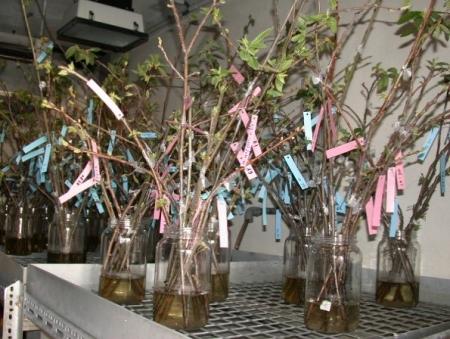
Objective:
The objectives of this participative research program are:
1: Select surviving European chestnut trees within strong impacted areas by the ink disease
2: Evaluate their resistance against Phytophthora in laboratory, and verify their belonging to sweet chestnut, the species Castanea sativa.
3: Use the individuals showing the best resistance capacities against ink disease (“elite trees”) as seeds producers in seed orchards.
The expected results are:
- Reconquest and renewal of the actually declining chestnut orchards
- Decrease of production cost due to nuersery seedling production.
- Higher genetic diversity in the chestnut plantations.
Context:
Ink disease, caused by a root pathogen (P. cinnamomi, P. cambivora) induces dieback and mortality in sweet chestnut, C. sativa. It is an obstacle to the orchard and forest renewal.
In France, ink disease resistant hybrids rootstock have been selected by INRA, but they are not adapted to Mediterranean chestnut orchards. In this region, there is a strong demand from the sector to find new rootstocks from C. sativa for which there is a significant variability on ink disease sensibility in several provenances or varieties, in the forest population of the European Atlantic area, abd within the contaminated orchards.
Contacts:
Further information:
Decourcelle et al. 2004. Chestnut wild populations genetic diversity and susceptibility to ink disease in Atlantic Pyrenees and Navarra. Third International ChestnutCongress, Chaves, Portugal.
Ramos Guedes-Lafargue et al. 2005. Evaluation of INRA Chestnut Interspecific Hybrids. Acta Horticulturae, 693: 321-324.
Robin et al. 2006 Genetic variation in susceptibility to Phytophthora cambivora in European chestnut (Castanea sativa). Forest Ecology Management 226: 199-207.
Saintonge, 2005. En 2003 et 2004, l'encre et le chancre du châtaignier restent d'actualité. Département de la santé des forêts - Bilan de la santé des forêts en 2004
https://play.google.com/store/apps/details?id=com.inra
https://apps.apple.com/fr/app/vigilencre/id1471955505